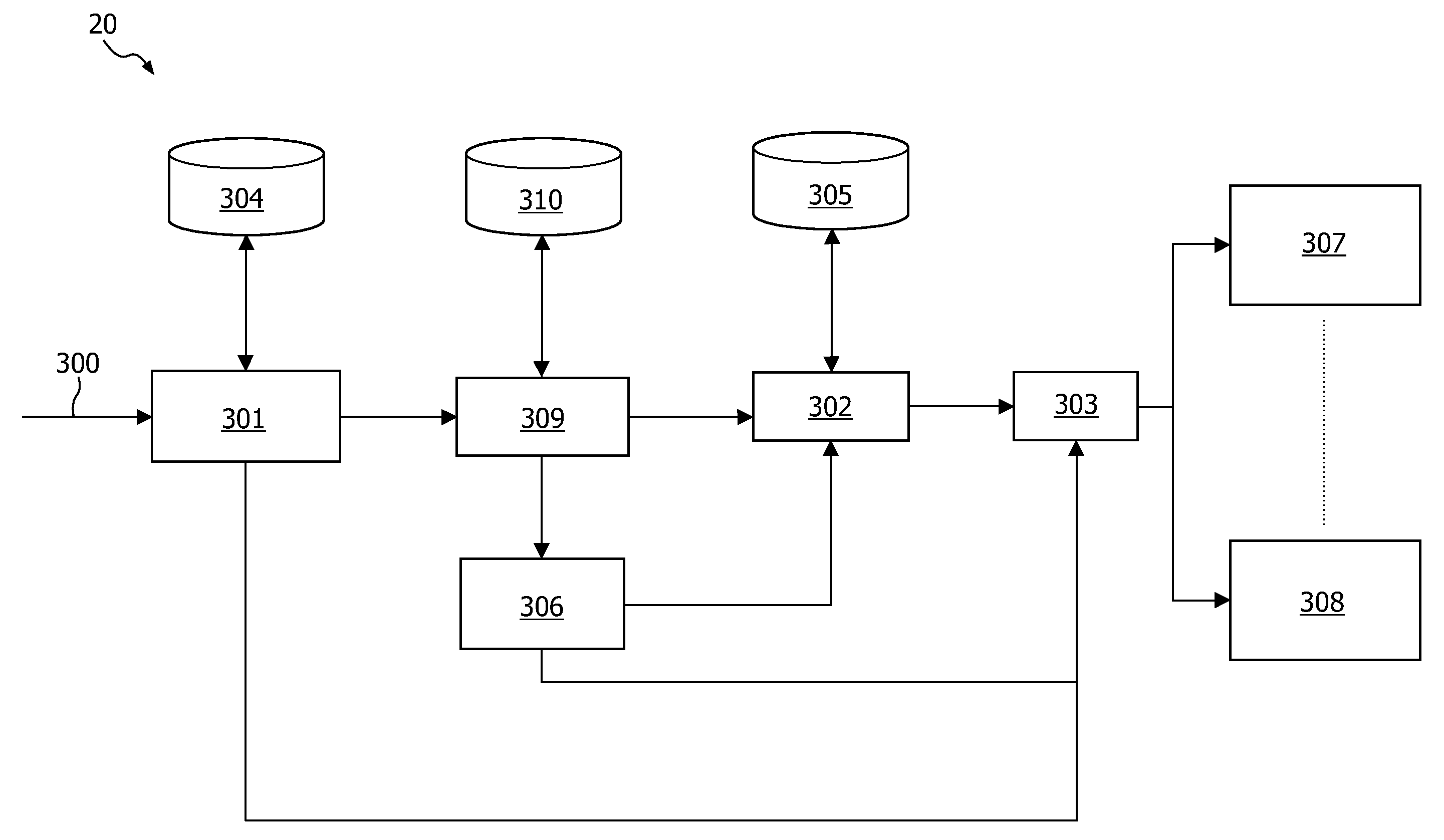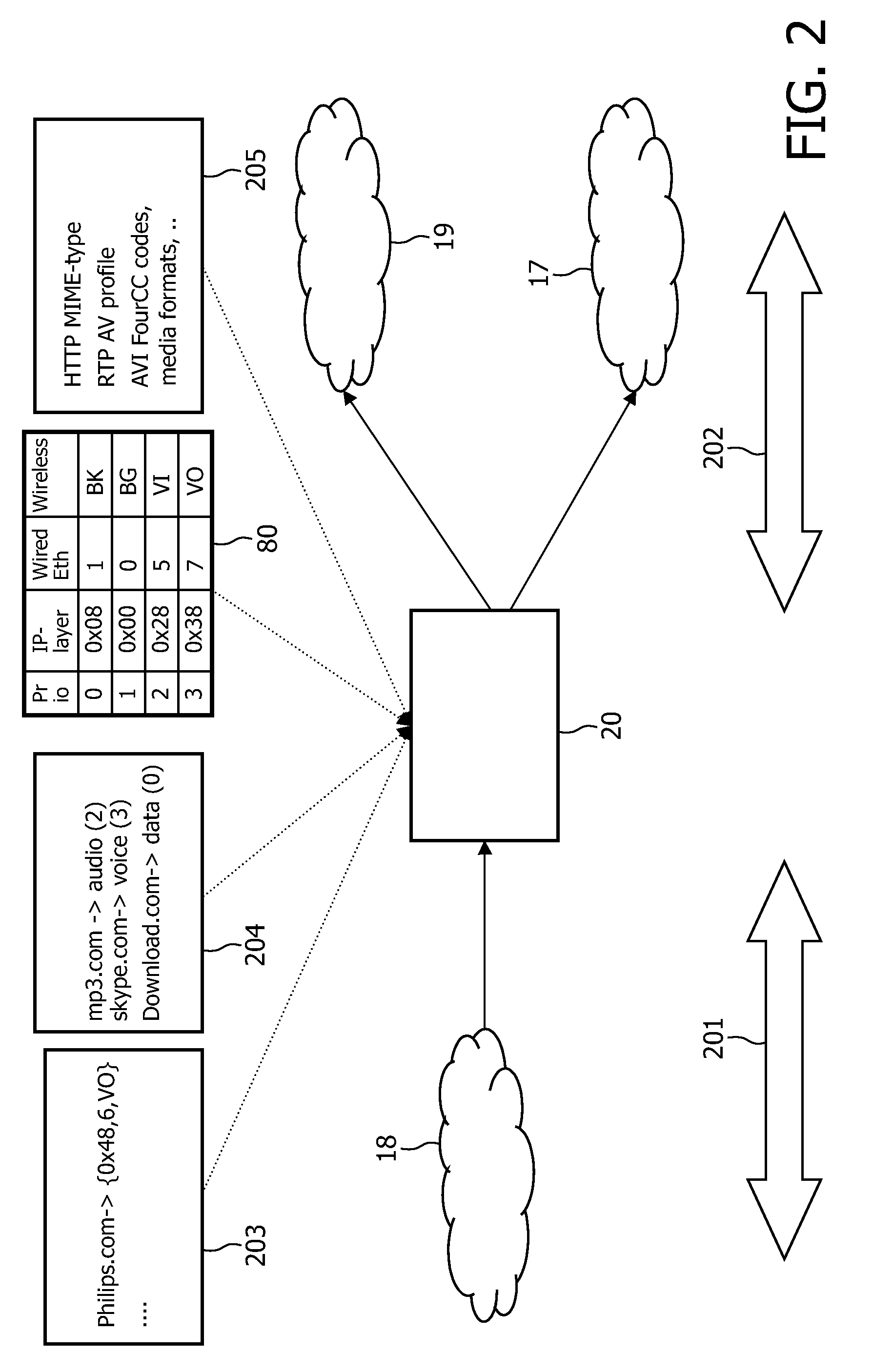Automatic packet tagging
a packet tagging and packet technology, applied in the field of network devices, can solve the problems of inability to detect qos parameters directly from packet contents, or perform bandwidth measurement for that purpose, and achieve the effect of convenient detection
- Summary
- Abstract
- Description
- Claims
- Application Information
AI Technical Summary
Benefits of technology
Problems solved by technology
Method used
Image
Examples
Embodiment Construction
[0025]FIG. 1 shows a network device in a network. The network has a first network segment 18, for example a wide area network [WAN] like the Internet, which is coupled to at least one source 30, and a second network segment 17, for example a local area network [LAN], coupled to at least one target, whereas the network device 20 is coupled to both network segments. Data packets may be exchanged between the source and target via the network. The source, for example a server providing a website to the internet, has a network interface 31, and one or more applications or services 32 that are able to communicate to the target by exchanging data packets via the network. The target 10, for example a home computer accessing the internet, has at least one application 12 and a control unit 13, and an interface unit 11 coupled to an antenna 14 for accessing a wireless network segment.
[0026]Priority-based Quality of Service (QoS) data communication is starting to be deployed in home networks th...
PUM
 Login to View More
Login to View More Abstract
Description
Claims
Application Information
 Login to View More
Login to View More - R&D
- Intellectual Property
- Life Sciences
- Materials
- Tech Scout
- Unparalleled Data Quality
- Higher Quality Content
- 60% Fewer Hallucinations
Browse by: Latest US Patents, China's latest patents, Technical Efficacy Thesaurus, Application Domain, Technology Topic, Popular Technical Reports.
© 2025 PatSnap. All rights reserved.Legal|Privacy policy|Modern Slavery Act Transparency Statement|Sitemap|About US| Contact US: help@patsnap.com



